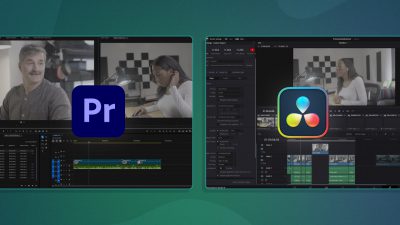Not too long ago, 360 video was all the rage. You saw it on Facebook, YouTube, and even in major advertisements. However, after a splashy debut, audiences lost interest, and it largely faded from the mainstream.
In this episode of our How to Video: Camera series, we will be discussing the history of 360 cameras, some of the current consumer cameras, and who can benefit the most from this technology.
We haven’t used 360 cameras on a regular basis so we decided to bring in an expert to chat about these cameras with us. Conveniently, Tom Pagut, SproutVideo’s customer success lead, has been using 360 cameras for years. In this video, Tom and Nick discuss his specific use case, and how others could benefit from a 360 camera.
History of 360
Before modern-day 360 cameras, typically the only way you could create an immersive experience was by using several cameras mounted on a vehicle to capture video in every outward direction. Then, you could project them onto different screens in a circle around an audience to create a full experience. This technique was called Circle-Vision 360, a method that the Walt Disney Company refined back in the 50s.
Fast forward to the 90s and early 2000s with improved technology and editing software, we began to see a small subset of earlier adopters utilizing 360 videos to fully immerse their audience. Also around this time, news outlets began integrating it into their programming, generally to show a full view of an area, like the wreckage of Katrina in 2008 for example.
Evolution of 360 Cameras
Fast forward to the mid-2010s, and 360 video was on the rise again. Facebook and YouTube introduced support for 360-degree playback in 2015, which corresponded with the rise of 360 consumer-level gear.
Camera Rigs
It was around this time that technology started making the process much simpler. For a while, the best way to achieve this look was just improving upon the circle-vision method by creating a rig that could hold multiple cameras in a circle.
One of the most famous rigs was the GoPro Omni. This device would sync six GoPro’s together to allow users to create a full 360-degree video. Since then, companies have created spherical devices with cameras built-in for professional and consumer use.
A huge drawback of this method was portability and price. In some cases, you would need 6 cameras to fill out the rig, not something most people have.
360 Cameras
However, around the same time these rigs were introduced, full-on 360 consumer-grade cameras broke into the market. Typically these cameras featured two ultra-wide or fisheye lenses back-to-back. This allows for each camera to capture video at an angle just over 180-degrees, which would then be stitched together to create a 360-degree object using software baked into the camera.
Today, you’ll find a whole host of different companies with their own iteration of the modern 360 camera. GoPro and Insta360 are two of the biggest in the field, but companies like Samsung, Ricoh, Vuze, and even Garmin have created 360 cameras at one point.
Hype Fallout
Around the time these devices were released, you probably saw 360 and virtual reality video just about everywhere. Big brands were incorporating it into their marketing, content creators were making full videos with it, even the average person could pick up a phone adapter and upload a 360 video to Facebook. Sadly, before long, the razzle-dazzle wore off, and 360 videos sort of vanished from the main stage. Big brands went back to normal videos and people’s patience for scrolling around virtual videos ran thin.
While it’s no longer trendy, there are some more practical uses for 360 cameras that might inspire a purchase in 2020 and beyond.
Getting The Most Out of 360 Video
After our discussion with Tom, who uses 360 cameras frequently for electric skateboarding, one main point really stood out. The best use for a 360 camera is not 360 video; it’s flat video.
It’s the perfect tool to capture everything around you, then crop to show exactly what you want in a flat video. You don’t have to worry about framing your shot, or your subjects. If you’re filming by yourself, that’s pretty major.
Just Capture Everything
When 360 first started out, viewers had to scroll around and explore the video on their own. While that was entertaining or useful in some limited applications, all too often, you felt like you were missing the action, the narrative, or both.
Today, it’s best used to capture the world around you and then create a video that stays close to the action. The very nature of the camera will provide you the opportunity to capture all the action, and yourself, without much thought. This makes it perfect for solo filmmakers, behind-the-scenes footage, tutorials, and many other applications. With a 360 camera, gone are the days of hoping you got the shot.
See the Insta360 One X2 in action on Tom’s instagram.
Typically you’ll see 360 cameras being marketed toward action sports enthusiasts because of their versatility, water-resistance, and gimbal-like qualities. But in reality, anything that requires more than one view could benefit from a camera like this. From a mechanic to a baker, or even someone doing a knitting tutorial, this camera is perfect for filming yourself and your subject simultaneously.
Where 360 Cameras Fall Short
There are some drawbacks to 360 cameras. While a top-of-the-line model like the Insta 360 X2 can record in 5.7K, it can only output in 1080p resolution. This might be okay for social media, but it won’t be suitable for all productions.
In that same vein, since it is capturing footage from two fisheye lenses, there is a much higher chance of distortion depending on the angle you choose to output. Lastly, like any smaller sensor camera, the image quality itself won’t match up to that of a full-frame camera.
While these cameras might not be the big spectacle they were made out to be back in 2015, they can still be an essential part of your kit when used correctly. What would you use a 360 camera for? Let us know in the comments below.








